#naixin
Explore tagged Tumblr posts
Text






﹙📼﹚ nene lockscreens ⊹ 𓈒 ۫
ᨘ໑ . *⠀psd by feerbell on DA; @dewinniepsd
22 notes
·
View notes
Text


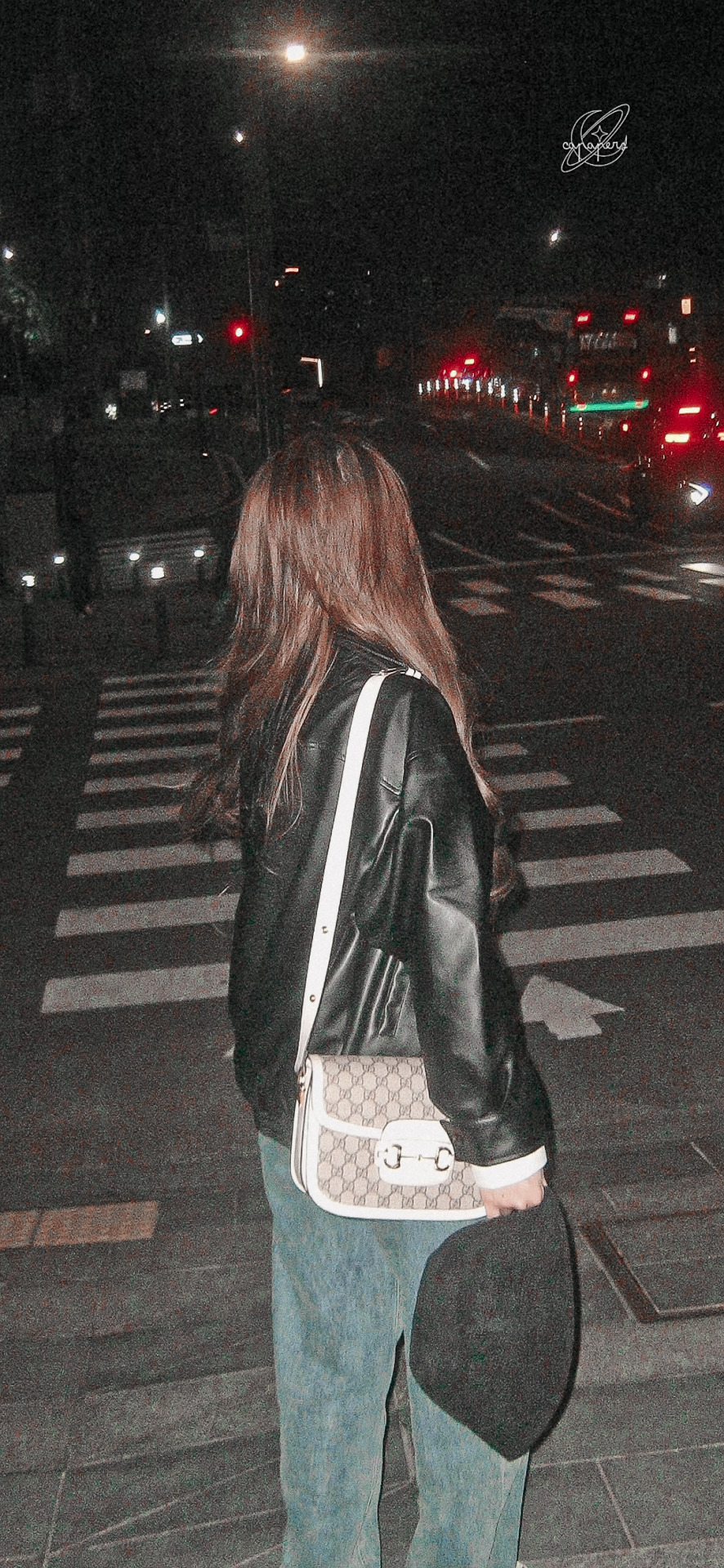



ㅤ͏ㅤ͏ㅤ͏૮♡ა⠀⠀𝐬𝐰𝐞𝐞𝐭⠀⠀⠀⠀﹠⠀⠀ㅤㅤ᪶𝗅𝗈𝗏𝖾
ㅤ͏ㅤ͏ㅤ͏ㅤ͏edit + simple of nene
#୨୧ capapers ۫ 𓈒 ㅤlocks#joo ⊹ ˑ ᘊ#nene#zheng naixin#naixin bonbon girls 303#nene lockscreens#nene wallpaper#nene wallpapers#nene edits#nene locks#zheng naixin lockscreens#zheng naixin wallpapers#zheng naixin wallpaper#zheng naixin edits#gg lockscreens#gg wallpapers#gg edit#gg edits#kpop wallpaper#kpop lockscreen#edits kpop#soft lockscreens#kpop soft edits#softcore
22 notes
·
View notes
Text
Jeff Satur-Lucid MV costar Nene Pornappan Pornpenpipat
So I know we've all been rewatching Lucid's MV, because it's so wonderful and beautiful, but of course I was curious about Jeff's costar, because I always am. So I looked her up, and turns out if you're a BL watcher, you may have recognized her. (I did not, though I have watched both seasons of this show, but I did think she was really beautiful.)
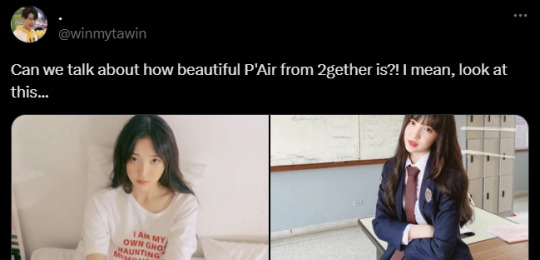
She's in 2gether the series, which is awesome. I did a very brief look into her, and the woman has a pretty wild career history and is also wonderfully talented. I didn't want anyone who watched Jeff's video to think that she's just a pretty face (though clearly she's very beautiful) so I did a smidgen of a deep dive.
I'll start with the basics...she is a Thai-Chinese (born in Bangkok, though both parents have Chinese ancestry) actress, and singer. Her Thai name is Pornnappan Pornpenpipat, and her Chinese name is Zheng Naixin. She uses the nickname Nene across pretty much all of her career endeavors. She's 25, and her birthdate is 25 June 1997. You can find her Instagram (nenevader) here.

Her professional career starts out in 2013, where she competed in True Academy Fantasia 10 (AF10) as the youngest contestant, being 16 at the time. Two years later she would debut with Thai idol group MilkShake managed by GMM Grammy. (You can see her in the center below.)

They released 2 singles, one in 2015 as their debut, and a second in 2016. While not officially disbanded as far as I can find, they have not released new music since 2016.
From 2016 to 2022 she would act in various roles in various countries, including Vietnam and China, and eventually play the role of Air in 2gether the series, which is also produced by GMM (specifically GMMTV).

In April of 2020 Nene participated in the Tencent Video's Chinese girl group reality competition show, Produce Camp 2020, eventually debuting as a member of BonBon303 in August of that year.

From 2020 to 2022 BonBon303 would release 3 EPs eventually disbanding in July of 2022. During those two years Nene would also continue appearing in various Chinese shows, including reality and variety shows.

She debuted as a solo artist with the single Promise on July 12, 2022, under Sony Music China.

You can watch the official MV here. (It's a good song, very much a kind of chill pop-y summer bop, appropriate to it's release date.)
In the midst of all of this she also works sporadically modelling (unsurprising, as she is very beautiful) and was also a brand ambassador and promoter for Leader and Lancome respectively.


More impressively she also worked as a cultural Ambassador in 2022 as the China-Thailand Cultural Ambassador (I'm assuming one of many) and as the 2022 Thailand Customs Festival China-Thailand Cultural Exchange Ambassador. We have been seeing especially over recent years an increase in cross-country- and cross-cultural cooperation amongst many East Asian and South East Asian countries (Remember Jeff was also part of the KonnecThai Music and Arts event in late April of this year).
She also has her first solo fanmeet in Bangkok coming up at the end of this month for her birthday, which is awesome and I hope she has a really fun time.

Now this is a lot of basic information, but doesn't give us much in the way of personality other than to clearly display that this women is multi-talented and determined. I can't personally attest to her personality, but based around her choices for her solo song/MV, and her Instagram posts, she seems to be very cool, she doesn't shy away from posting casual, candid, or unmade-up photos on IG, which always adds point in my book for authenticity.

I'm not saying you need to follow her or stan her, or anything else, but I know how much Jeff values his own career (especially now that it's 100% under his control) and I don't think he would have chosen Nene, if he didn't think she was a pretty cool person. Here's some pics/clips she and Jeff posted of the BTS of the Lucid MV where they are clearly having a lot of fun.

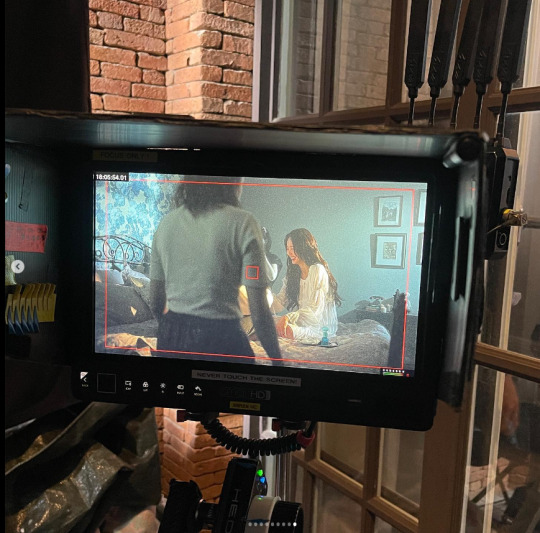
If you wanna look for some more info, you can start on her Kprofile page here, or also check her Wikipedia page here.
17 notes
·
View notes
Text
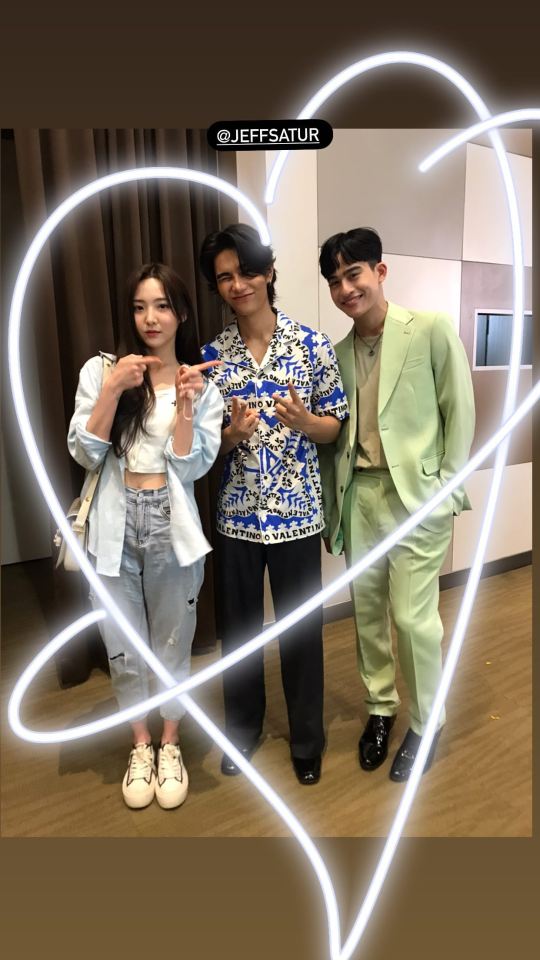


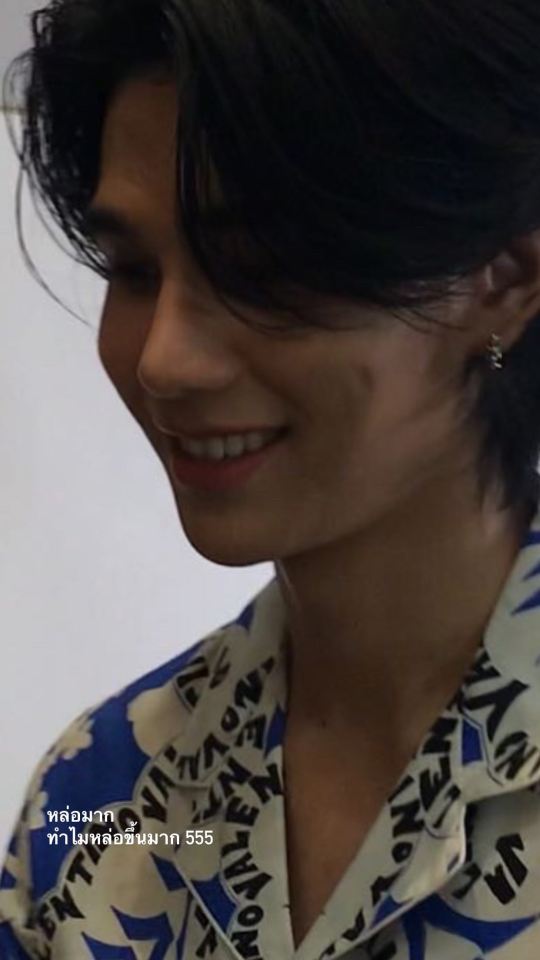
[20230319] cr: suwandichou
#jeff satur#barcode tinnasit#jeffbarcode#randomBLarchiveJeffBarcode#nene#zheng naixin#studio on saturn#live on saturn bkk
21 notes
·
View notes
Text






☾︎ nene’ icons
#nene icons#cpop icons#bonbon girls 303 icons#bonbon girls icons#bonbon girls nene icons#zheng naixin#zheng naixin icons#Spotify
2 notes
·
View notes
Text

Nene - June 22nd 2023
6 notes
·
View notes
Text
Lucid
Why on Earth I have thought that Jeff's new song will be not sad.
I listened to Thai and English versions yesterday and to be honest I liked them but they did not make big impressions. However I am kinda a music video connoisseur and I was extremly intrigued when I saw Nene in the trailer. And today I was not dissapointed. I love the MV and I did cry in the end - so yes, I am satisfied now.
2 notes
·
View notes
Text
Hey Tangzhi's! I was curious about the demographics in relation to gender and sexuality in the bonbon girls fandom so I made this survey. I would love for people to take it and maybe share it around so more Tangzhi's can see it!
#bonbongirls303#bonbon girls#ytsn#ytsn 303#xilinnayi gao#curley gao#zhao yue#akria#wang yijin#chen zhuoxuan#nene pornnappan#zheng naixin#liu xiening#zhang yifan
3 notes
·
View notes
Text
i want to be bright, nene has been my gf since chuang😭😭 (i’m so happy for them)
0 notes
Text












nene (pornnappan pornpenpipat | zheng naixin) × bonbon 303 (++galerie)
#pornnappan pornpenpipat#zheng naixin#nene#nene avatar#avatar#pornnappan pornpenpipat avatar#zheng naixin avatar#bonbon 303 nene#nene bonbon 303#bonbon 303
0 notes
Text


Nene Zheng Naixin for a Lancôme brand event
1 note
·
View note
Text
The house of sun au
This ua is that there is a kind of guild of demon killers, who worship sun wukong as their father deity. The name of this guild is the house of the sun. It is composed of five leaders who call themselves the sons of sun wukong.
They introduce themselves to mk and his friends
"Hi I am king paramita and they are my brothers daode, cishan, naixin, zhihui together we are the leaders of our guild. We want to invite you personally to one of our offices in the capital city of slow cart kingdom to celebrate the festival of the Monkey King."
Mk happily accepts, this fascinated never knew that there is a festival at Monkey King in slow cart kingdom.
I still don't know where I'm going with the story of this au I accept ideas
I made this au basically to create a whole guild of demon killers who worship sun wukong and imagine subcategories and all, I just can't get this idea out of my head.
8 notes
·
View notes
Text
Bottled Water Can Contain Hundreds of Thousands of Previously Uncounted Tiny Plastic Bits, Study Finds
A New Microscopic Technique Zeroes in on the Poorly Explored World of Nanoplastics, Which Can Pass Into Blood, Cells and Your Brain
— By Kevin Krajick |January 8, 2024 | Columbia Climate School

Image By Naixin Qian
In recent years, there has been rising concern that tiny particles known as microplastics are showing up basically everywhere on Earth, from polar ice to soil, drinking water and food. Formed when plastics break down into progressively smaller bits, these particles are being consumed by humans and other creatures, with unknown potential health and ecosystem effects. One big focus of research: bottled water, which has been shown to contain tens of thousands of identifiable fragments in each container.
Now, using newly refined technology, researchers have entered a whole new plastic world: the poorly known realm of nanoplastics, the spawn of microplastics that have broken down even further. For the first time, they counted and identified these minute particles in bottled water. They found that on average, a liter contained some 240,000 detectable plastic fragments—10 to 100 times greater than previous estimates, which were based mainly on larger sizes.
The study was just published in the journal Proceedings of the National Academy of Sciences.
Nanoplastics are so tiny that, unlike microplastics, they can pass through intestines and lungs directly into the bloodstream and travel from there to organs including the heart and brain. They can invade individual cells, and cross through the placenta to the bodies of unborn babies. Medical scientists are racing to study the possible effects on a wide variety of biological systems.
“Previously this was just a dark area, uncharted. Toxicity studies were just guessing what’s in there,” said study coauthor Beizhan Yan, an environmental chemist at Columbia Climate School’s Lamont-Doherty Earth Observatory. “This opens a window where we can look into a world that was not exposed to us before.”
Worldwide plastic production is approaching 400 million metric tons a year. More than 30 million tons are dumped yearly in water or on land, and many products made with plastics including synthetic textiles shed particles while still in use. Unlike natural organic matter, most plastics do not break down into relatively benign substances; they simply divide and redivide into smaller and smaller particles of the same chemical composition. Beyond single molecules, there is no theoretical limit to how small they can get.
Microplastics are defined as fragments ranging from 5 millimeters (less than a quarter inch) down to 1 micrometer, which is 1 millionth of a meter, or 1/25,000th of an inch. (A human hair is about 70 micrometers across.) Nanoplastics, which are particles below 1 micrometer, are measured in billionths of a meter.
Plastics in bottled water became a public issue largely after a 2018 study detected an average of 325 particles per liter; later studies multiplied that number many times over. Scientists suspected there were even more than they had yet counted, but good estimates stopped at sizes below 1 micrometer—the boundary of the nano world.

A tiny particle of polystyrene plastic as imaged by a new microscopic technique. It is about 200 nanometers across, or 200 billionths of a meter. Courtesy Naixin Qian
“People developed methods to see nano particles, but they didn’t know what they were looking at,” said the new study’s lead author, Naixin Qian, a Columbia graduate student in chemistry. She noted that previous studies could provide bulk estimates of nano mass, but for the most part could not count individual particles, nor identify which were plastics or something else.
The new study uses a technique called stimulated Raman scattering microscopy, which was co-invented by study coauthor Wei Min, a Columbia biophysicist. This involves probing samples with two simultaneous lasers that are tuned to make specific molecules resonate. Targeting seven common plastics, the researchers created a data-driven algorithm to interpret the results. “It is one thing to detect, but another to know what you are detecting,” said Min.
The researchers tested three popular brands of bottled water sold in the United States (they declined to name which ones), analyzing plastic particles down to just 100 nanometers in size. They spotted 110,000 to 370,000 plastic fragment in each liter, 90% of which were nanoplastics; the rest were microplastics. They also determined which of the seven specific plastics they were, and charted their shapes—qualities that could be valuable in biomedical research.
One common one was polyethylene terephthalate or PET. This was not surprising, since that is what many water bottles are made of. (It is also used for bottled sodas, sports drinks and products such as ketchup and mayonnaise.) It probably gets into the water as bits slough off when the bottle is squeezed or gets exposed to heat. One recent study suggests that many particles enter the water when you repeatedly open or close the cap, and tiny bits abrade.
However, PET was outnumbered by polyamide, a type of nylon. Ironically, said Beizhan Yan, that probably comes from plastic filters used to supposedly purify the water before it is bottled. Other common plastics the researchers found: polystyrene, polyvinyl chloride and polymethyl methacrylate, all used in various industrial processes.
A somewhat disturbing thought: the seven plastic types the researchers searched for accounted for only about 10% of all the nanoparticles they found in samples; they have no idea what the rest are. If they are all nanoplastics, that means they could number in the tens of millions per liter. But they could be almost anything, “indicating the complicated particle composition inside the seemingly simple water sample,” the authors write. “The common existence of natural organic matter certainly requires prudent distinguishment.”
The researchers are now reaching beyond bottled water. “There is a huge world of nanoplastics to be studied,” said Min. He noted that by mass, nanoplastics comprise far less than microplastics, but “it’s not size that matters. It’s the numbers, because the smaller things are, the more easily they can get inside us.”
Among other things, the team plans to look at tap water, which also has been shown to contain microplastics, though far less than bottled water. Beizhan Yan is running a project to study microplastics and nanoplastics that end up in wastewater when people do laundry—by his count so far, millions per 10-pound load, coming off synthetic materials that comprise many items. (He and colleagues are designing filters to reduce the pollution from commercial and residential washing machines.) The team will soon identify particles in snow that British collaborators trekking by foot across western Antarctica are currently collecting. They also are collaborating with environmental health experts to measure nanoplastics in various human tissues and examine their developmental and neurologic effects.
“It is not totally unexpected to find so much of this stuff,” said Qian. “The idea is that the smaller things get, the more of them there are.”
The study was coauthored by Xin Gao and Xiaoqi Lang of the Columbia chemistry department; Huipeng Deng and Teodora Maria Bratu of Lamont-Doherty; Qixuan Chen of Columbia’s Mailman School of Public Health; and Phoebe Stapleton of Rutgers University.
#State of the Planet 🌎#Columbia Climate School 🏫 | Climate Eart & Society#Health | Press Release | Water 🚿 💧 💦#News From The Columbia Climate School
0 notes
Text
Bottled Water Can Contain Hundreds of Thousands of Previously Uncounted Tiny Plastic Bits - Technology Org
New Post has been published on https://thedigitalinsider.com/bottled-water-can-contain-hundreds-of-thousands-of-previously-uncounted-tiny-plastic-bits-technology-org/
Bottled Water Can Contain Hundreds of Thousands of Previously Uncounted Tiny Plastic Bits - Technology Org
In recent years, there has been rising concern that tiny particles known as microplastics are showing up basically everywhere on Earth, from polar ice to soil, drinking water and food. Formed when plastics break down into progressively smaller bits, these particles are being consumed by humans and other creatures, with unknown potential health and ecosystem effects. One big focus of research is bottled water, which has been shown to contain tens of thousands of identifiable fragments in each container.
Image credit: Naixin Qian
Now, using newly refined technology, researchers have entered a whole new plastic world: the poorly known realm of nanoplastics, the spawn of microplastics that have broken down even further. For the first time, they counted and identified these minute particles in bottled water. They found that on average, a liter contained some 240,000 detectable plastic fragments—10 to 100 times greater than previous estimates, which were based mainly on larger sizes.
The study was just published in the journal Proceedings of the National Academy of Sciences.
Nanoplastics are so tiny that, unlike microplastics, they can pass through intestines and lungs directly into the bloodstream and travel from there to organs including the heart and brain. They can invade individual cells, and cross through the placenta to the bodies of unborn babies. Medical scientists are racing to study the possible effects on a wide variety of biological systems.
“Previously this was just a dark area, uncharted. Toxicity studies were just guessing what’s in there,” said study coauthor Beizhan Yan, an environmental chemist at Columbia Climate School’s Lamont-Doherty Earth Observatory. “This opens a window where we can look into a world that was not exposed to us before.”
Worldwide plastic production is approaching 400 million metric tons a year. More than 30 million tons are dumped yearly in water or on land, and many products made with plastics including synthetic textiles shed particles while still in use. Unlike natural organic matter, most plastics do not break down into relatively benign substances; they simply divide and redivide into smaller and smaller particles of the same chemical composition. Beyond single molecules, there is no theoretical limit to how small they can get.
Microplastics are defined as fragments ranging from 5 millimeters (less than a quarter inch) down to 1 micrometer, which is 1 millionth of a meter, or 1/25,000th of an inch. (A human hair is about 70 micrometers across.) Nanoplastics, which are particles below 1 micrometer, are measured in billionths of a meter.
Plastics in bottled water became a public issue largely after a 2018 study detected an average of 325 particles per liter; later studies multiplied that number many times over. Scientists suspected there were even more than they had yet counted, but good estimates stopped at sizes below 1 micrometer—the boundary of the nano world.
A tiny particle of polystyrene plastic as imaged by a new microscopic technique. It is about 200 nanometers across, or 200 billionths of a meter. Image credit: Naixin Qian
“People developed methods to see nano particles, but they didn’t know what they were looking at,” said the new study’s lead author, Naixin Qian, a Columbia graduate student in chemistry. She noted that previous studies could provide bulk estimates of nano mass, but for the most part could not count individual particles, nor identify which were plastics or something else.
The new study uses a technique called stimulated Raman scattering microscopy, which was co-invented by study coauthor Wei Min, a Columbia biophysicist. This involves probing samples with two simultaneous lasers that are tuned to make specific molecules resonate. Targeting seven common plastics, the researchers created a data-driven algorithm to interpret the results. “It is one thing to detect, but another to know what you are detecting,” said Min.
The researchers tested three popular brands of bottled water sold in the United States (they declined to name which ones), analyzing plastic particles down to just 100 nanometers in size. They spotted 110,000 to 370,000 plastic fragment in each liter, 90% of which were nanoplastics; the rest were microplastics. They also determined which of the seven specific plastics they were, and charted their shapes—qualities that could be valuable in biomedical research.
One common one was polyethylene terephthalate or PET. This was not surprising, since that is what many water bottles are made of. (It is also used for bottled sodas, sports drinks and products such as ketchup and mayonnaise.) It probably gets into the water as bits slough off when the bottle is squeezed or gets exposed to heat. One recent study suggests that many particles enter the water when you repeatedly open or close the cap, and tiny bits abrade.
However, PET was outnumbered by polyamide, a type of nylon. Ironically, said Beizhan Yan, that probably comes from plastic filters used to supposedly purify the water before it is bottled. Other common plastics the researchers found: polystyrene, polyvinyl chloride and polymethyl methacrylate, all used in various industrial processes.
A somewhat disturbing thought: the seven plastic types the researchers searched for accounted for only about 10% of all the nanoparticles they found in samples; they have no idea what the rest are. If they are all nanoplastics, that means they could number in the tens of millions per liter. But they could be almost anything, “indicating the complicated particle composition inside the seemingly simple water sample,” the authors write. “The common existence of natural organic matter certainly requires prudent distinguishment.”
The researchers are now reaching beyond bottled water. “There is a huge world of nanoplastics to be studied,” said Min. He noted that by mass, nanoplastics comprise far less than microplastics, but “it’s not size that matters. It’s the numbers, because the smaller things are, the more easily they can get inside us.”
Among other things, the team plans to look at tap water, which also has been shown to contain microplastics, though far less than bottled water. Beizhan Yan is running a project to study microplastics and nanoplastics that end up in wastewater when people do laundry—by his count so far, millions per 10-pound load, coming off synthetic materials that comprise many items. (He and colleagues are designing filters to reduce the pollution from commercial and residential washing machines.) The team will soon identify particles in snow that British collaborators trekking by foot across western Antarctica are currently collecting. They also are collaborating with environmental health experts to measure nanoplastics in various human tissues and examine their developmental and neurologic effects.
“It is not totally unexpected to find so much of this stuff,” said Qian. “The idea is that the smaller things get, the more of them there are.”
Source: Columbia University
You can offer your link to a page which is relevant to the topic of this post.
#000#algorithm#Antarctica#Babies#bloodstream#Brain#Cells#chemical#chemistry#Chemistry & materials science news#climate#Composition#container#Dark#data#data-driven#drinking#drinking water#earth#Earth Observatory#effects#Environmental#Filters#Food#Health#heart#Heat#how#human#humans
0 notes
Text
[20230320] cr: studio_on_saturn
#jeff satur#barcode tinnasit#jeffbarcode#randomBLarchiveJeffBarcode#nene#zheng naixin#studio on saturn#live on saturn bkk
19 notes
·
View notes
Text
eu duviiiido alguém me dar um jeff satur de opp e me deixar usar a nene/zheng naixin no plot duvido muito !!
1 note
·
View note